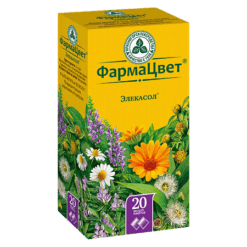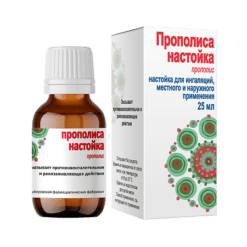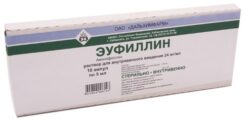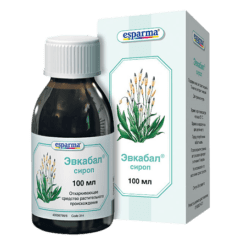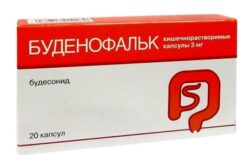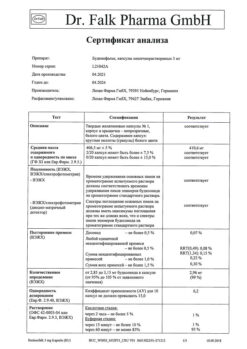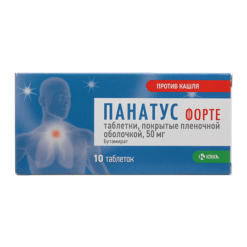No products in the cart.
Foradil Combi, 12mcg+400mcg 120 pcs
€1.00
Out of stock
(E-mail when Stock is available)
Description
Foradil Combo is a combined bronchodilator containing GCS for topical use and selective beta2-adrenoceptor, which have an additive effect on reducing the frequency of exacerbations of bronchial asthma.
Budesonide is an inhaled GCS that has anti-inflammatory effects in recommended doses (has a lower frequency of side effects than systemic GCS). Formoterol is a selective agonist of beta2-adrenergic receptors, causing relaxation of bronchial smooth muscle in patients with reversible airway obstruction.
The bronchodilator effect occurs quickly, within 1-3 minutes after inhalation, and lasts for 12 hours after inhalation of a single dose.
The addition of formoterol to budesonide reduces the severity of bronchial asthma symptoms, improves bronchial function and reduces the frequency of exacerbations of the disease.
The effect on bronchial function corresponds to that of the combination of budesonide and formoterol monotherapy and exceeds the effect of budesonide alone. The drug has good tolerability.
Indications
Indications
Bronchial asthma: – Insufficiently controlled with inhaled GCS and short-acting beta 2 -agonists as on-demand therapy; – Adequately controlled with inhaled GCS and long-acting beta 2 -agonists.
Chronic obstructive pulmonary disease (COPD) (with proven efficacy of GCS).
Active ingredient
Active ingredient
Composition
Composition
Formoterol fumarate dihydrate,
budesonide
Associated substances:
Lactose monohydrate.
How to take, the dosage
How to take, the dosage
Formoterol and budesonide are intended for inhaled use. The drugs are capsules with powder for inhalation, which should be used only with a special device – an aerosolizer, which is included in the package. Formoterol and budesonide should be prescribed individually, at the lowest effective dose. If control of bronchial asthma symptoms is achieved with formoterol therapy, gradual reduction of the drug dose should be considered.
Dose reduction of formoterol is performed under regular medical monitoring of the patient’s condition. Against the background of bronchial asthma exacerbation should not start treatment with formoterol or change the dosage of the drug. Formoterol should not be used to relieve acute attacks of bronchial asthma. When prescribing therapy to a patient with an inhalation device, the dose of the drug should be gradually adjusted (titrated) to doses sufficient to maintain the therapeutic effect.
Foradil is intended for inhaled use in adults and children 6 years of age and older. The drug is a powder for inhalation, applied with a special device – an aerosolizer, which is included in the package. Budesonide + formoterol Adults Preinhalation of beta-adrenergic stimulants dilates the bronchi, improves the entry of budesonide into the airways and enhances its therapeutic effect.
Therefore, for maintenance therapy of bronchial asthma and COPD, inhalation of formoterol is first followed by inhalation of budesonide. 1. The dose of formoterol for regular maintenance therapy is 12-24 mcg (contents of 1-2 capsules) 2 times daily. The maximum recommended dose for adults (48 mcg/day) should not be exceeded. Taking into account that the maximum daily dose of formoterol is 48 mcg, if necessary, 12-24 mcg/day may be used additionally to relieve bronchial asthma symptoms. If the need for additional doses of the drug is no longer episodic (e.g., becomes more frequent than 2 days per week), the patient should be advised to consult a physician to revise therapy, as this may indicate a worsening course of the disease. 2. The maintenance dose of budesonide for adult patients is 400-800 mcg/day in 2 doses (200-400 mcg 2 times/day). In worsening of bronchial asthma during transfer from oral GCS to inhaled GCS or in case of decrease of oral GCS dose budesonide can be administered in dose of 1600 mcg/day in 2-4 intakes.
If the dose of budesonide (divided into several doses) is less than 400 mcg/day, there is no need to use the drug. Children 6 years of age and older Prior inhalation of beta-adrenergic stimulants dilates the bronchi, improves the entry of budesonide into the airways, and enhances its therapeutic effect. Therefore, for maintenance therapy of bronchial asthma, inhalation of formoterol is performed first, followed by inhalation of budesonide. 1. The dose of formoterol for regular maintenance therapy is 12 mcg 2 times/day. The maximum recommended dose of the drug is 24 mcg/day. 2. The dose of budesonide for regular maintenance therapy is 100-200 mcg 2 times/day.
If necessary, the budesonide dose may be increased to a maximum of 800 mcg/day. Inhalation rules To ensure proper use, the physician or other health care provider should show the patient how to use the inhaler; explain to the patient that capsules with powder for inhalation should be used only with an aerolizer; warn the patient that the capsules are for inhalation use only and are not intended to be swallowed. In children and adolescents, inhalation of budesonide and formoterol should be performed under adult supervision.
It is important to make sure that the child follows the inhalation technique correctly. It is important that the patient understands that because the gelatin capsule breaks, small pieces of gelatin may enter the mouth or throat as a result of inhalation.
In order to minimize this phenomenon, the capsule should not be pierced more than once. The capsule should be removed from the blister pack immediately before use. Rinsing the mouth with water after inhaling budesonide may prevent irritation of the oral and pharyngeal mucosa and reduce the risk of systemic adverse events.
The instructions for use of the aerosolizer.
1. Remove the cap from the aerosolizer.
2. Hold the airlimiter firmly by its base and turn the mouthpiece in the direction of the arrow.
3. Place the capsule into the chamber at the base of the aerosolizer (it is capsule shaped). Remember to remove the capsule from the blister pack immediately prior to inhalation.
4. Turning the mouthpiece, close the aerosolizer.
5. Holding the airlighter in an upright position, push the blue buttons on the sides of the airlighter once until they are fully depressed. Then release them. At this point, the capsule might break when pierced, allowing small pieces of gelatin to get into your mouth or throat. Since gelatin is edible, this does no harm. To prevent the capsule from disintegrating completely, you should follow the following requirements: Do not puncture the capsule more than once; adhere to storage rules; remove the capsule from the blister only immediately before inhalation.
6. draw a full exhalation.
7. put the mouthpiece in your mouth and tilt your head back slightly. Firmly cup the mouthpiece with your lips and take a quick, steady, as deep breath as possible. The patient should hear a characteristic rattling sound produced by the rotation of the capsule and the atomization of the powder. If you do not hear a rattling sound, open the airbrush and see what has happened to the capsule. It may be stuck in the cell, in which case you should carefully remove the capsule. Never try to release it by repeatedly pressing the buttons on each side of the airlimiter.
8. If you hear a distinctive sound when you inhale, hold your breath as long as possible. At the same time, take the mouthpiece out of your mouth. Then breathe out. Open the aerosolizer and see if there is any powder left in the capsule. If there is powder in the capsule, repeat steps 6-8.
9 At the end of the inhalation, open the aerosolizer, remove the empty capsule, close the mouthpiece and close the aerosolizer with the cap. Wipe the mouthpiece and cell with a dry cloth to remove any powder residue. You can also use a soft brush.
Interaction
Interaction
Formoterol Formoterol (like other beta2-adrenergic stimulants) should be used with caution in patients receiving medications such as quinidine, disopyramide, procainamide, phenothiazines, antihistamines, MAO inhibitors, tricyclic antidepressants, and other drugs known to prolong QT interval, as their cardiovascular effects may be enhanced.Because in these cases, the effects of adrenostimulants on the cardiovascular system may be intensified.
The use of drugs that can prolong the QT interval increases the risk of ventricular arrhythmias. Concomitant use of other sympathomimetic agents may worsen formoterol side effects. Concomitant use of xanthine derivatives, GCS or diuretics may increase the potential hypokalemic effect of beta2-adrenomimetics. Hypokalemia may increase the predisposition to develop cardiac arrhythmias in patients receiving foxglove drugs. Beta-adrenoblockers may weaken the effects of formoterol.
In this regard, formoterol should not be used in conjunction with beta-adrenoblockers (including eye drops) unless compelled to use such a combination of drugs for any extraordinary reasons. – Budesonide Use of the drug together with CYP3A4 inhibitors (e.g., itraconazole, ketoconazole, ritonavir, nelfinavir, amiodarone, clarithromycin) may lead to decreased metabolism of budesonide and increase its systemic concentration.
When prescribing budesonide with CYP3A4 inhibitors, adrenal function should be monitored regularly and the dose of budesonide should be changed if necessary. When budesonide is used with CYP3A4-inducing drugs (e.g., rifampicin, phenobarbital, phenytoin), budesonide metabolism may be increased and its systemic concentration decreased. Methandrostenolone, estrogens increase the effect of budesonide.
Special Instructions
Special Instructions
Inhaled powder containing budesonide and formoterol in an 80/4.5 mcg/dose ratio is not indicated for patients with severe bronchial asthma. It is not indicated for initial therapy selection in the initial stages of bronchial asthma treatment. Gradual reduction of the drug dose is recommended before discontinuing treatment.
An increase in the frequency of acute bronchodilator administration indicates a worsening of the course of the underlying disease and serves as a reason to reconsider the treatment tactics for bronchial asthma. To minimize the possibility of developing oropharyngeal fungal lesions, rinse the mouth with water after each inhalation. There are no data on the use of the drug for acute attacks of bronchial asthma. Patients should be strictly advised to have emergency medication with them at all times. Treatment should not be started during exacerbation of bronchial asthma.
As with any other inhalation therapy, paradoxical bronchospasm may occur (in this case, the treatment tactic should be reviewed and if necessary, an alternative therapy should be prescribed). The manifestation of systemic action during inhalation therapy is less likely than when using oral GCS. However, it can occur with any inhaled GCS, especially when using high doses over a long period of time (it is important to use the lowest effective dose of inhaled GCS to ensure optimal control of asthma symptoms).
Physicians should carefully monitor the growth of children and adolescents who take GCS in any dosage form for a long time, and evaluate the ratio of the benefit of GCS therapy to the possible risk of growth retardation. If adrenal function was impaired during previous systemic GCS therapy, precautions should be taken when transferring patients to inhaled treatment with the drug (insufficient adrenal function may be maintained for a long time in patients who discontinue oral GCS therapy).
In stressful situations, the possibility of residual adrenal dysfunction in these patients should always be kept in mind. There are no clinical data on the use of the drug or combined use of formoterol and budesonide during pregnancy. In pregnant women, the drug should be used only if the expected benefits to the mother exceed the potential risk to the fetus, and the lowest effective dose of budesonide necessary to maintain adequate control of bronchial asthma symptoms should be used. It is not known whether formoterol or budesonide penetrates into the breast milk of women (the drug may be prescribed to breastfeeding women only if the expected benefit to the mother is greater than any possible risk to the baby).
During treatment, it is recommended to monitor serum K+ concentrations and glucose in patients with diabetes. It contains lactose (less than 1 mg/dose). Usually this amount does not cause problems in patients with lactose intolerance.
Contraindications
Contraindications
-period of lactation (breastfeeding);
-active pulmonary tuberculosis;
-hereditary intolerance to galactose, severe lactase deficiency and impaired glucose-galactose absorption syndrome;
Children under 6 years of age;
High sensitivity to formoterol, budesonide, or any other component of the drug.
Side effects
Side effects
The adverse reactions reported in clinical trials are categorized according to the frequency of occurrence. The following criteria were used to assess frequency: very common (⥠1/10); common (⥠1/100, < 1/10); sometimes (⥠1/1000, < 1/100); rare (⥠1/10 000, < 1/1000); very rare (< 1/10 000), including individual reports.
Within each group, adverse events are distributed in decreasing order of significance. – Formoterol Allergic reactions: very rare – hypersensitivity reactions such as arterial hypotension, urticaria, angioedema, pruritus, exanthema.
CNS disorders: often – headache, tremor; sometimes – agitation, anxiety, increased excitability, insomnia, dizziness.
Cardiovascular system disorders: frequently – palpitations; sometimes – tachycardia; very rarely – peripheral edema.
Respiratory system: sometimes – bronchospasm, including paradoxical, irritation of the mucous membranes of the pharynx and larynx.
Digestive system disorders: very rarely – nausea, taste disorders.
Muscular system disorders: sometimes – muscle cramps and myalgia.
The following side effects have been identified with the use of other dosage forms that include formoterol: cough and rash. When using formoterol in clinical practice, the following changes in the results of laboratory tests have been noted: hypokalemia, hyperglycemia, prolongation of the QT interval (during ECG). – Budesonide
Endocrine system disorders: rarely – suppression of adrenal cortex function, Cushing’s syndrome, hypercorticism, growth retardation in children and adolescents.
An organ of vision: rarely – cataracts, glaucoma. Allergic reactions: rare – hypersensitivity reactions, rash, urticaria, angioedema, itching.
CNS disorders: rare – unusual behavior, including depression (described in children).
Musculoskeletal system: decreased bone mineral density.
Respiratory system: frequently – cough; rarely – paradoxical bronchospasm, candidiasis of mucous membranes of the oral cavity and larynx, pharyngeal irritation, dysphonia which disappears after discontinuation of budesonide therapy or reduction of the drug dose.
In a three-year clinical trial, use of budesonide in patients with COPD showed an increased incidence of subcutaneous hematoma (10%) and pneumonia (6%) compared to the placebo group (4% and 3%)
Overdose
Overdose
Formoterol
Symptoms: Formoterol overdose is suspected to cause phenomena characteristic of the excessive action of other beta 2 – adrenomimetics, such as nausea, vomiting, headache, tremor, somnolence, palpitations, tachycardia, ventricular arrhythmias, metabolic acidosis, hypokalemia, hyperglycemia.
Treatment: supportive and symptomatic therapy is indicated. Hospitalization is necessary in severe cases. The use of beta-adrenoblockers may be considered, but only with extreme caution and under close medical supervision, since the use of such agents may cause bronchospasm. Budesonide.
Budesonide has low acute toxicity. A single inhalation of a large amount of the drug may lead to temporary suppression of hypothalamic-pituitary-adrenal system function, which does not require emergency therapy. In case of budesonide overdose, treatment may be continued in doses sufficient to maintain the therapeutic effect.
Similarities
Similarities
Additional information
| Shelf life | 2 years. |
|---|---|
| Conditions of storage | At a temperature not exceeding 25°C. |
| Manufacturer | Novartis Pharma GmbH, Germany |
| Medication form | capsules with powder for inhalation |
| Brand | Novartis Pharma GmbH |
Related products
Buy Foradil Combi, 12mcg+400mcg 120 pcs with delivery to USA, UK, Europe and over 120 other countries.



